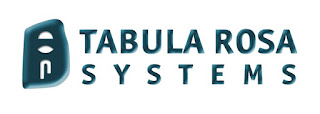The smartest people can write the worst emails and
those of less intellect can write the best.
—Paul
Babicki
Optimized email
Netiquette involves a basic understanding of the core components of an email
message, how they work, and their attributes. By simply learning these, anyone
can improve their communication skills, reduce mistakes and mishaps, and
produce emails that will enhance communication skills and benefit all email
users, whether personal, general, or business. By consistently implementing simple,
proper, basic email construction, any person of any age, social standing,
demographic, or education can communicate better. As communication
improves, a better world community results, with benefits all can experience
and enjoy.
Have
a need for speed? With the proliferation of email, texting, Twitter, and IM, the very basics
of letter writing and English usage have dramatically suffered. Even the most “learned”
of people have dramatically compromised their otherwise stellar or normal
writing habits when using electronic communications.
The
following is an example taken from the “Daily Mail,” where considerable email “shorthand”
is shown.
2 b, r nt 2 b dat
is d Q wthr ts noblr nd mnd 2 sufr d slngs& arowz of outrAjs fortn r 2 tAk armz
agnst a C f trblz, & by oposn nd em?
This example is, of course,
text-speak for Shakespeare’s Hamlet:
To be, or not to
be: that is the question. Whether ‘tis nobler in the mind to suffer the slings
and arrows of outrageous fortune, or to take arms against a sea of troubles, and by opposing end
them?
The number of keystrokes that were
reduced constitute 7 , in this example.
At an average typist speed of 240 characters per minute, the time utilizing
shortened words, omission of punctuation, basic format, capitalization, and
basic grammar may marginally reduce input time, but actually can result in
overall time loss. The average time saved in this example is less than 20
seconds. It would probably take the recipient longer to translate and read the
shortened message. Many email readers may not recognize acronyms, Internet slang,
emoticons, or abbreviations.
Similarly, lack of punctuation may confuse text meaning, cause additional time
to be spent rereading messages, or elicit a completely different meaning.
By
contrast, a well-structured, etiquette-compliant message will more likely deliver
a lucid, easy-to-understand, effective message. This applies to personal or
business messages alike. For individuals, accuracy with personal or basic
communication will optimize relationships. For professionals or organizations,
good Netiquette will convey professionalism, improve communication value, and
reduce potentially damaging or embarrassing situations.



.jpg)



No comments:
Post a Comment